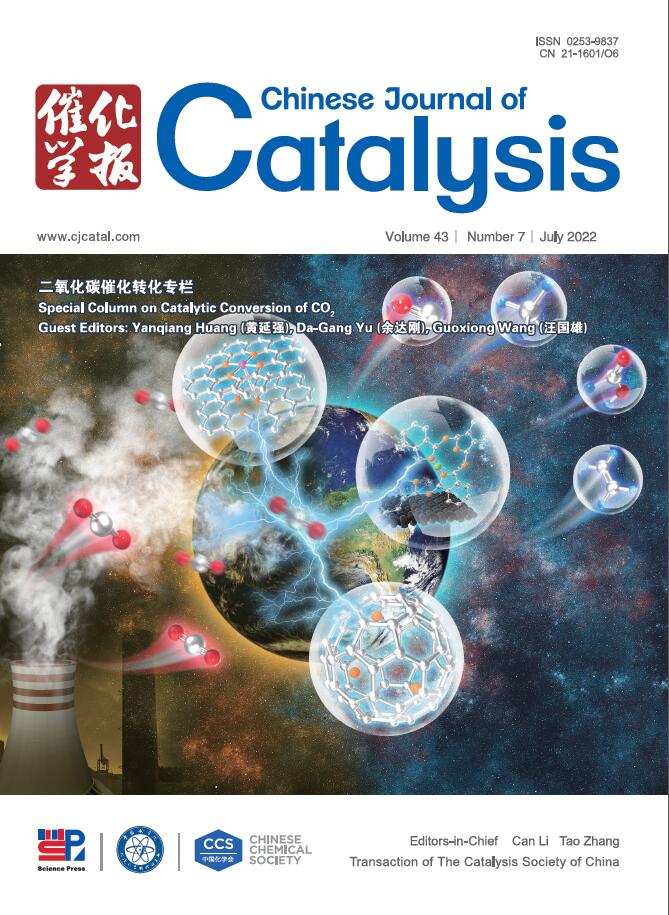Collaborative photocatalytic C–C coupling with Cu and P dual sites to produce C2H4 over CuxP/g-C3N4 heterojunction
IF 15.7
1区 化学
Q1 CHEMISTRY, APPLIED
引用次数: 0
Abstract
Light-driven CO2 reduction reaction (CO2RR) to value-added ethylene (C2H4) holds significant promise for addressing energy and environmental challenges. While the high energy barriers for *CO intermediates hydrogenation and C–C coupling limit the C2H4 generation. Herein, CuxP/g-C3N4 heterojunction prepared by an in-situ phosphating technique, achieved collaborative photocatalytic CO2 and H2O, producing CO and C2H4 as the main products. Notably, the selectivity of C2H4 produced by CuxP/g-C3N4 attained to 64.25%, which was 9.85 times that of CuxP (6.52%). Detailed time-resolution photoluminescence spectra, femtosecond transient absorption spectroscopy tests and density functional theory (DFT) calculation validate the ultra-fast interfacial electron transfer mechanism in CuxP/g-C3N4 heterojunction. Successive *H on P sites caused by adsorbed H2O splitting with moderate hydrogenation ability enables the multi-step hydrogenation during CO2RR process over CuxP/g-C3N4. With the aid of mediated asymmetric Cu and P dual sites by g-C3N4 nanosheet, the produced *CHO shows an energetically favorable for C–C coupling. The coupling formed *CHOCHO further accepts photoexcited efficient e– and *H to deeply produce C2H4 according to the C2+ intermediates, which has been detected by in-situ diffuse reflectance infrared Fourier transform spectroscopy and interpreted by DFT calculation. The novel insight mechanism offers an essential understanding for the development of CuxP-based heterojunctions for photocatalytic CO2 to C2+ value-added fuels.
求助全文
约1分钟内获得全文
求助全文
来源期刊

Chinese Journal of Catalysis
工程技术-工程:化工
CiteScore
25.80
自引率
10.30%
发文量
235
审稿时长
1.2 months
期刊介绍:
The journal covers a broad scope, encompassing new trends in catalysis for applications in energy production, environmental protection, and the preparation of materials, petroleum chemicals, and fine chemicals. It explores the scientific foundation for preparing and activating catalysts of commercial interest, emphasizing representative models.The focus includes spectroscopic methods for structural characterization, especially in situ techniques, as well as new theoretical methods with practical impact in catalysis and catalytic reactions.The journal delves into the relationship between homogeneous and heterogeneous catalysis and includes theoretical studies on the structure and reactivity of catalysts.Additionally, contributions on photocatalysis, biocatalysis, surface science, and catalysis-related chemical kinetics are welcomed.
 求助内容:
求助内容: 应助结果提醒方式:
应助结果提醒方式:


